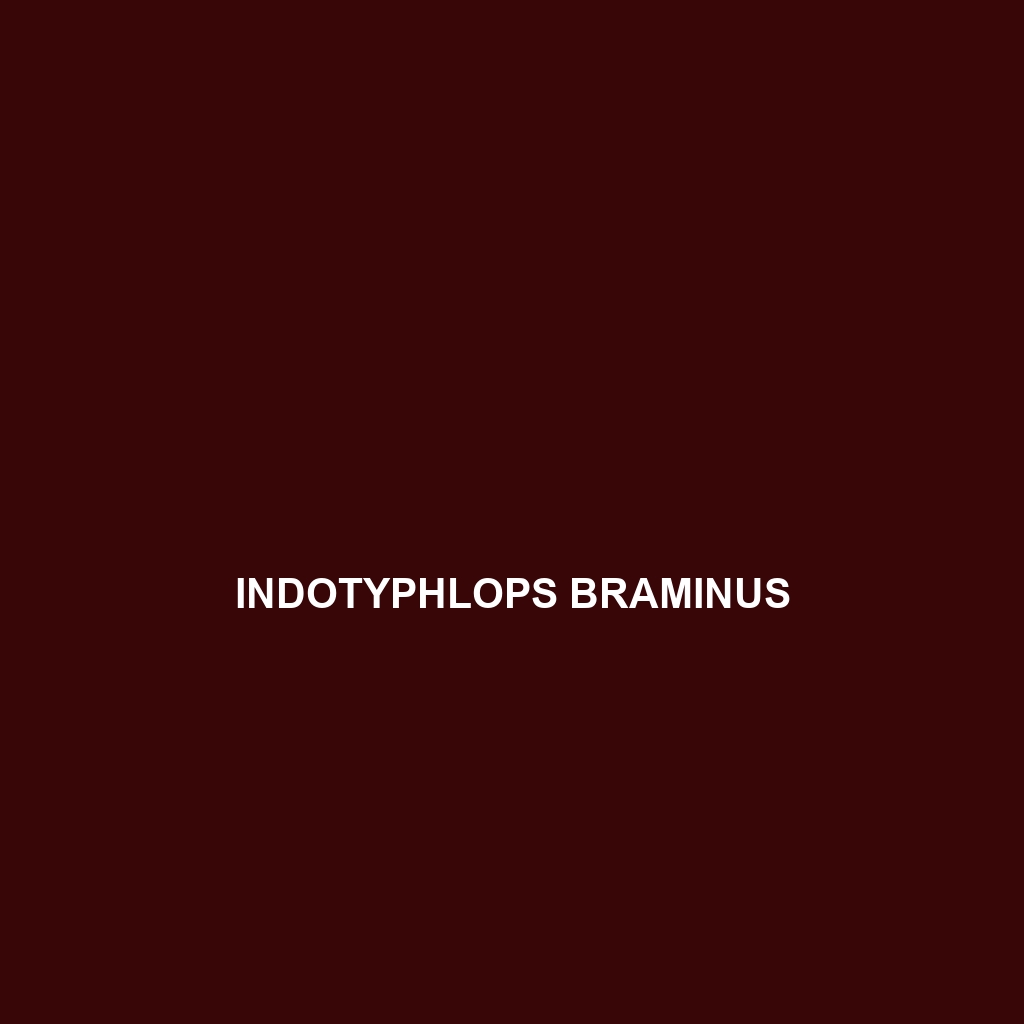Common Name
Indotyphlops braminus
Scientific Name
Indotyphlops braminus
Habitat
Indotyphlops braminus, commonly known as the Brahminy Blindsnake, is primarily found in a variety of habitats across tropical and subtropical regions. This species thrives in rainforests, savannas, and temperate forests, showing a preference for moist, loose soils that enable easy burrowing. Geographic regions include Southeast Asia, the Indian subcontinent, and parts of the Southern Pacific. These environments typically feature warm, humid climates with ample leaf litter and organic debris, providing both cover and food sources for these elusive serpents.
Physical Characteristics
The Brahminy Blindsnake exhibits distinctive physical traits that set it apart from other snakes. Adults typically range from 20 to 40 centimeters in length, with a cylindrical body that allows for effective burrowing. The snake’s skin is glossy and often appears in shades of brown, gray, or black, sometimes complemented by light bands or spots. One of its unique features is its small, vestigial eyes, which are covered by scales, providing limited visibility. This adaptation assists in protecting its delicate ocular features from soil and debris as it navigates underground.
Behavior
Indotyphlops braminus is predominantly a burrowing snake, demonstrating nocturnal behavior that enhances its ability to evade predators and hunt during cooler periods. It tends to be solitary and is rarely observed in groups, highlighting its individualistic nature. Mating rituals generally occur during the wet season, as the increased moisture allows for easier movement through its preferred habitat. These snakes are non-venomous and rely on their burrowing lifestyle to escape threats, often retreating deeper into soil when disturbed.
Diet
The diet of Indotyphlops braminus primarily consists of small invertebrates, making it an insectivore. Its feeding behavior typically revolves around consuming ants, termites, and other soil-dwelling insects, which it locates using its acute sense of smell. The snake employs a unique feeding strategy, often swallowing its prey whole without the need for venom or constriction, highlighting its adaptation to a specialized diet within its underground environment.
Reproduction
The reproductive cycle of Indotyphlops braminus is fascinating, characterized by a relatively short gestation period. Mating typically occurs in the rainy season, and females lay several eggs that are deposited underground. The eggs measure about 1.5 to 2 cm in diameter and are usually laid in clusters within the soil. The incubation period lasts approximately two months, after which hatchlings emerge resembling miniature adults. Parental care is minimal, with young snakes receiving no assistance as they begin their independent lives in the similarly underground habitat.
Conservation Status
Currently, Indotyphlops braminus holds a conservation status of Least Concern according to the IUCN Red List. However, habitat destruction due to urbanization, agricultural expansion, and deforestation poses potential threats to this species. Despite its wide distribution, localized populations may face challenges due to fragmentation of habitats. Conservation efforts focus on habitat preservation and raising awareness of ecological balance to ensure the continued survival of this unique species.
Interesting Facts
One intriguing fact about Indotyphlops braminus is that it is often mistaken for an earthworm due to its small size and cylindrical shape. This resemblance provides it with some protection from predators, as many animals avoid potential worm-like prey. Additionally, it has a limited range of vocal communication, emitting soft sounds that may facilitate mate attraction. The ability to adapt flexibly to various moist environments allows the Brahminy Blindsnake to thrive in often overlooked locales.
Role in Ecosystem
Indotyphlops braminus plays an essential ecological role as a consumer of soil-dwelling invertebrates, contributing to the balance of insect populations within its habitat. By controlling these populations, it indirectly supports the health of plant life and soil composition. Its presence indicates a healthy underground ecosystem, and even as a prey species, it provides nourishment to various predators, thereby reinforcing its role as an integral part of the food web. The serpentine burrowing activity also aids in soil aeration, enhancing nutrient cycling and overall soil health.
This formatted species description maintains a clear structure and uses relevant keywords, ensuring it is both informative and optimized for search engines.
